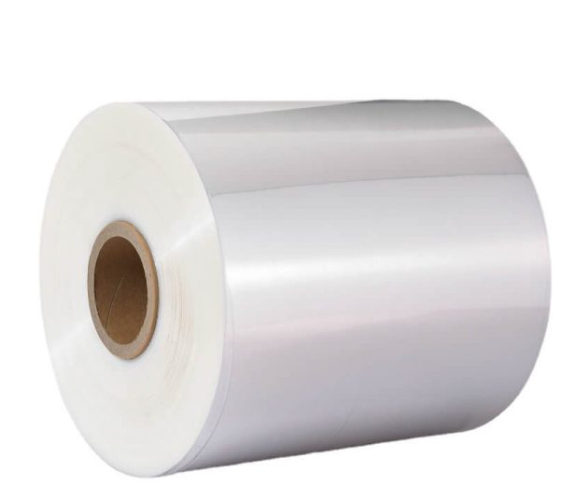0 Комментарии
0 Поделились
1166 Просмотры

Каталог
Знакомьтесь и заводите новых друзей
- Войдите, чтобы отмечать, делиться и комментировать!
- Accessing advanced tools and services should be as effortless as possible, and now it is with AI technology. 회원가입 없이 AI 사용하기 provides users with the opportunity to experiment with and benefit from AI-powered solutions instantly, without the need for time-consuming sign-ups. This option removes the barriers typically associated with getting started, such as entering personal details or waiting for account verification. Whether it's generating text, analyzing data, or automating mundane tasks, the ability to immediately engage with AI fosters a user-friendly experience. With this approach, anyone can explore AI at their own pace, making the technology more accessible and less intimidating.
http://chatbotai.kr/Accessing advanced tools and services should be as effortless as possible, and now it is with AI technology. 회원가입 없이 AI 사용하기 provides users with the opportunity to experiment with and benefit from AI-powered solutions instantly, without the need for time-consuming sign-ups. This option removes the barriers typically associated with getting started, such as entering personal details or waiting for account verification. Whether it's generating text, analyzing data, or automating mundane tasks, the ability to immediately engage with AI fosters a user-friendly experience. With this approach, anyone can explore AI at their own pace, making the technology more accessible and less intimidating. http://chatbotai.kr/0 Комментарии 0 Поделились 3718 Просмотры - 0 Комментарии 0 Поделились 1295 Просмотры
- Mulch Colorants: Enhancing Landscape Aesthetics with Pigment
Mulch colorants are liquid or powdered substances used to add or refresh the color of landscape mulch, typically made from wood chips, bark, or shredded materials. These colorants offer a way to enhance the visual appeal of gardens, pathways, and other landscaped areas, providing a uniform and often more vibrant look than natural, uncolored mulch. Available in a range of hues, from rich browns and blacks to vibrant reds and even less conventional colors, mulch colorants allow homeowners and landscapers to customize the appearance of their outdoor spaces to complement their homes and plantings.
The primary purpose of using mulch colorants is aesthetic enhancement. Over time, natural mulch can fade due to exposure to sunlight and weathering, losing its initial vibrancy. Colorants provide a cost-effective way to revitalize the appearance of existing mulch without the need for complete replacement. This can save both time and money while instantly improving the curb appeal of a property. Furthermore, colored mulch can create a striking contrast with green foliage and colorful flowers, making them stand out more effectively and contributing to a well-defined and manicured landscape.
VIEW FULL REPORT ACCESS AT: https://www.marketresearchfuture.com/reports/mulch-colorants-market-38938
Mulch colorants are generally formulated using pigments, which are finely ground, insoluble particles that impart color. Common types of pigments include iron oxides for browns and reds, and carbon-based pigments for black and darker shades. Some colorants may also contain binders to help the pigment adhere to the mulch and extend the longevity of the color. While concerns about the safety of mulch colorants have been raised, reputable manufacturers typically use non-toxic pigments that are considered safe for plants, pets, and the environment when used according to the product instructions. It's always advisable to choose colorants from trusted suppliers and to check product labels for safety information.
The application of mulch colorants is a relatively straightforward process, often done using a garden sprayer. The colorant concentrate is typically mixed with water according to the manufacturer's instructions to achieve the desired color intensity. The diluted solution is then sprayed evenly over the surface of the existing mulch, ensuring good coverage. It's generally recommended to apply the colorant on a dry day with no rain expected for at least 24-48 hours to allow the color to fully adhere and dry. For best results, the mulch should be turned or raked before application to expose faded areas and ensure even coloring.
While the primary benefit of mulch colorants is aesthetic, there can be secondary advantages. Some users report that colored mulch can help with weed suppression by blocking sunlight, similar to uncolored mulch. Additionally, by refreshing the color of existing mulch, homeowners may be less inclined to add excessive layers of new mulch, which can sometimes hinder proper soil aeration and moisture balance. However, it's important to note that the color itself doesn't inherently improve the soil or provide the same benefits as the organic matter in natural, decomposing mulch.
When considering the environmental impact of mulch colorants, it's important to differentiate between the pigments themselves and the source of the mulch being colored. As mentioned, reputable colorant manufacturers use non-toxic pigments. However, concerns have been raised about the potential for recycled wood used in some colored mulches to contain contaminants from treated wood (like CCA - chromated copper arsenate, though banned in many places for residential use) or other industrial waste. Therefore, it's prudent to inquire about the source of the mulch from your supplier, regardless of whether you are using a colorant. Choosing mulches made from natural, untreated wood or bark is generally the most environmentally sound practice.
In conclusion, mulch colorants offer a simple and effective way to enhance the visual appeal of landscaped areas by adding or refreshing the color of mulch. When using these products, it's important to choose reputable brands that utilize non-toxic pigments and to be mindful of the source of the mulch being colored. By using mulch colorants responsibly, homeowners and landscapers can achieve aesthetically pleasing results while minimizing potential environmental concerns.
Mulch Colorants: Enhancing Landscape Aesthetics with Pigment Mulch colorants are liquid or powdered substances used to add or refresh the color of landscape mulch, typically made from wood chips, bark, or shredded materials. These colorants offer a way to enhance the visual appeal of gardens, pathways, and other landscaped areas, providing a uniform and often more vibrant look than natural, uncolored mulch. Available in a range of hues, from rich browns and blacks to vibrant reds and even less conventional colors, mulch colorants allow homeowners and landscapers to customize the appearance of their outdoor spaces to complement their homes and plantings. The primary purpose of using mulch colorants is aesthetic enhancement. Over time, natural mulch can fade due to exposure to sunlight and weathering, losing its initial vibrancy. Colorants provide a cost-effective way to revitalize the appearance of existing mulch without the need for complete replacement. This can save both time and money while instantly improving the curb appeal of a property. Furthermore, colored mulch can create a striking contrast with green foliage and colorful flowers, making them stand out more effectively and contributing to a well-defined and manicured landscape. VIEW FULL REPORT ACCESS AT: https://www.marketresearchfuture.com/reports/mulch-colorants-market-38938 Mulch colorants are generally formulated using pigments, which are finely ground, insoluble particles that impart color. Common types of pigments include iron oxides for browns and reds, and carbon-based pigments for black and darker shades. Some colorants may also contain binders to help the pigment adhere to the mulch and extend the longevity of the color. While concerns about the safety of mulch colorants have been raised, reputable manufacturers typically use non-toxic pigments that are considered safe for plants, pets, and the environment when used according to the product instructions. It's always advisable to choose colorants from trusted suppliers and to check product labels for safety information. The application of mulch colorants is a relatively straightforward process, often done using a garden sprayer. The colorant concentrate is typically mixed with water according to the manufacturer's instructions to achieve the desired color intensity. The diluted solution is then sprayed evenly over the surface of the existing mulch, ensuring good coverage. It's generally recommended to apply the colorant on a dry day with no rain expected for at least 24-48 hours to allow the color to fully adhere and dry. For best results, the mulch should be turned or raked before application to expose faded areas and ensure even coloring. While the primary benefit of mulch colorants is aesthetic, there can be secondary advantages. Some users report that colored mulch can help with weed suppression by blocking sunlight, similar to uncolored mulch. Additionally, by refreshing the color of existing mulch, homeowners may be less inclined to add excessive layers of new mulch, which can sometimes hinder proper soil aeration and moisture balance. However, it's important to note that the color itself doesn't inherently improve the soil or provide the same benefits as the organic matter in natural, decomposing mulch. When considering the environmental impact of mulch colorants, it's important to differentiate between the pigments themselves and the source of the mulch being colored. As mentioned, reputable colorant manufacturers use non-toxic pigments. However, concerns have been raised about the potential for recycled wood used in some colored mulches to contain contaminants from treated wood (like CCA - chromated copper arsenate, though banned in many places for residential use) or other industrial waste. Therefore, it's prudent to inquire about the source of the mulch from your supplier, regardless of whether you are using a colorant. Choosing mulches made from natural, untreated wood or bark is generally the most environmentally sound practice. In conclusion, mulch colorants offer a simple and effective way to enhance the visual appeal of landscaped areas by adding or refreshing the color of mulch. When using these products, it's important to choose reputable brands that utilize non-toxic pigments and to be mindful of the source of the mulch being colored. By using mulch colorants responsibly, homeowners and landscapers can achieve aesthetically pleasing results while minimizing potential environmental concerns.WWW.MARKETRESEARCHFUTURE.COMMulch Colorants Market Size, Share & Global Report 2034The Mulch Colorants Market was $1.76B in 2024 and is projected to reach $2.90B by 2034, growing at a 5.2% CAGR from 2025.0 Комментарии 0 Поделились 1290 Просмотры - 0 Комментарии 0 Поделились 1475 Просмотры
- Looking for packaging that’s tough, flexible, and crystal-clear? Say hello to Polyolefin Shrink Film! Whether you're packaging gifts, food, or electronics, this film offers unbeatable durability and a sleek, professional look.
But here’s the real question: What’s the most innovative or creative way you've used shrink film for packaging? Drop your ideas or experiences in the comments below—let's share some packaging tips!
#PolyolefinShrinkFilm #ShrinkFilm #PackagingIdeas
✨ Looking for packaging that’s tough, flexible, and crystal-clear? Say hello to Polyolefin Shrink Film! 🎉 Whether you're packaging gifts, food, or electronics, this film offers unbeatable durability and a sleek, professional look. But here’s the real question: What’s the most innovative or creative way you've used shrink film for packaging? 🤔 Drop your ideas or experiences in the comments below—let's share some packaging tips! 👇 #PolyolefinShrinkFilm #ShrinkFilm #PackagingIdeasPolyolefin (POF) Shrink Film Manufacturer, Supplier - JtpackageJtpackage specializes in POF Shrink Films and Polyolefin Shrink Films, providing high-quality, durable, and customizable POF Shrink Films. As a professional Polyolefin Shrink Films factory, we offer wholesale options to meet various business needs.0 Комментарии 0 Поделились 4220 Просмотры - 0 Комментарии 0 Поделились 1189 Просмотры
- 0 Комментарии 0 Поделились 1163 Просмотры
- 0 Комментарии 0 Поделились 1063 Просмотры
- ChatGPTGratuit est l’outil IA gratuit qui améliore votre productivité au travail en 2025. Rapide, fiable et intuitif, il vous aide à exceller dans vos missions. Testez ChatGPTGratuit dès maintenant et transformez votre façon de travailler !
Avec ChatGPTGratuit, le travail devient plus fluide. Adoptez-le aujourd’hui et atteignez vos objectifs professionnels !
Accédez gratuitement à chatgpt sur : https://chatgptgratuit.info/
#chatgptfrancais #chatgptgratuit #chatgpt #francais #france #chatgptenligne #chatgpt #chatbot #chataiChatGPTGratuit est l’outil IA gratuit qui améliore votre productivité au travail en 2025. Rapide, fiable et intuitif, il vous aide à exceller dans vos missions. Testez ChatGPTGratuit dès maintenant et transformez votre façon de travailler ! Avec ChatGPTGratuit, le travail devient plus fluide. Adoptez-le aujourd’hui et atteignez vos objectifs professionnels ! Accédez gratuitement à chatgpt sur : https://chatgptgratuit.info/ #chatgptfrancais #chatgptgratuit #chatgpt #francais #france #chatgptenligne #chatgpt #chatbot #chatai0 Комментарии 0 Поделились 14950 Просмотры








